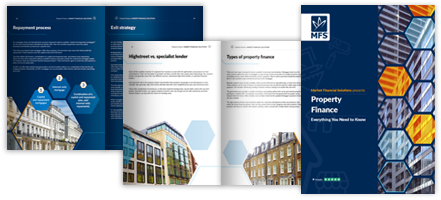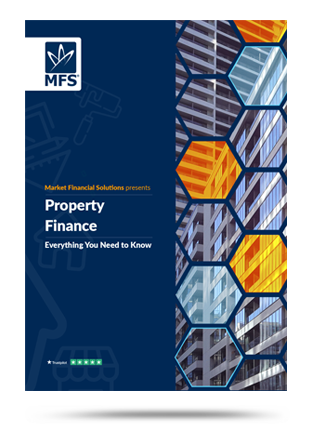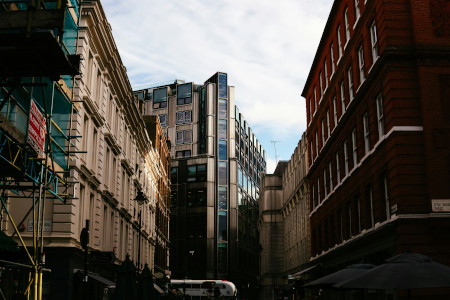Disclaimer
Market Financial Solutions are a bridging loan and buy-to-let mortgage provider, not financial advisors. Therefore, Investors are encouraged to seek professional advice. The information in this content is correct at time of writing.

Labour has big housebuilding plans. As part of its manifesto, Labour vowed to build 1.5 million homes[1] within 5 years of getting into power. Of course, the main concern here is whether the government will be able to hit this target. But on top of this, the question remains where will all these homes be built?
To partly address this, Labour plans to build new towns across the UK. In fact, it set up a New Towns Taskforce[2] in mid-2024 to help get the job done. This taskforce will focus on: “large-scale new communities built on greenfield land and separated from other nearby settlements, but also a larger number of urban extensions and urban regeneration schemes that will work with the grain of development in any given area.
“The unifying principle will be that each of the new settlements will contain at least 10,000 homes, although we expect a number to be far larger in size. Collectively, we expect they could provide hundreds of thousands more homes in the decades to come.”
The latest update from the New Towns Taskforce revealed its moving onto phase two of its work: exploring locations for new towns. Specifically, it is: “focusing on areas ripe for early intervention as part of a first initial wave, alongside the longer-term pipeline. Location selection for new towns should be strategically rational, supported wherever possible by existing infrastructure and ideally with local support to ensure successful development.
“We will also be undertaking further analysis to understand the impact of different delivery and funding models, as well as the approach to land acquisition and placemaking, to inform our final recommendations for government[3].”
This is all well and good, but there are still relatively few details on where Labour’s new towns will be based. The taskforce will submit a final report to MHCLG ministers by the summer which will include a list of places new towns could potentially be located.
Still, even without official confirmation, there are few hotspots which have emerged as contenders for planning and funding.
Where Will They Be Based?
While an official list of new towns won’t be revealed until the summer, we know that over 100 potential, undisclosed sites have been put forward by councils, developers, and landowners to the taskforce.
Despite the lack of an official “Labour new town” list, it hasn’t stopped a few industry insiders and experts from suggesting some prime locations. In early 2025, the think tank UK Day One[4], recommended four sites to the Government. These were Taplow in Buckinghamshire, Poppleton on the outskirts of York, and extensions on the borders of Manchester and Leeds.
Taplow specifically was touted for its potential. It’s a key location, according to the researchers, due to its proximity to “high-wage job opportunities, productive businesses, and good rail connections to London.”
Meanwhile, Urbanist Architecture[5], went one step further and identified 20 high-potential locations that offer a combination of strategic economic potential, existing infrastructure and transport links, and the capacity to evolve into self-sustaining, thriving communities. They are:
- Around the Cambridge Area
- The M1 Corridor around Milton Keynes
- The Thames Estuary (Ebbsfleet and surrounding areas)
- South Hampshire
- The Midlands (particularly around Birmingham, Leicester, and Nottingham)
- Hale (Manchester)
- Roundhay (Leeds)
- Oxford
- Norwich
- Reading
- Stratford-upon-Avon
- Taunton
- Exeter
- Harrogate
- Preston
- Carlisle
- Guildford
- Peterborough
- Swindon
- Chelmsford

Will Labour’s New Towns Even Get Built?
Labour’s plans are ambitious to say the least. Given the state’s record, many doubt we’ll come anywhere close to building 1.5 million homes over the coming years, with or without new Labour towns. The UK has had a target of building at least 300,000 new homes every year for some time, but we haven’t hit that target once in decades[6].
Nevertheless, the current government, with a sizeable majority behind it, appears to be taking major steps to meet the challenge. To start with, Labour has vowed to build on low-quality Green Belt land, known as the “Grey Belt”. By doing so, it aims to avoid inevitable pushback on trying to develop on protected high-value Green Belt land.
Also, a Planning and Infrastructure Bill[7] has been introduced which plans to open up the planning process, prevent blockers from halting plans, and get builders to build quicker. Angela Rayner herself detailed that by ending “bureaucratic burdens” that hold developments back, the government would usher in the “biggest building boom in a generation[8]”. Timeline wise, work on new Labour towns is set to begin by at least 2029, if not sooner[9].
The Potential Uniqueness of Labour’s New Towns, and the Opportunities
There may be one key differentiator between Labour’s new towns, and those that came before – what they’re made of. Under the government’s net zero plans, Labour aims to increase the number of homes built with timber frames[10].
This could bode well for developers and property investors. Generally, when compared to the cost of bricks, timber structures are much more affordable[11].
More generally, when new towns are created successfully, it can create opportunities for property investors. Popular towns grow and see their populations rise, and an expanding populus needs more housing, local shops, service providers, and everything else that adds to a thriving community.
It’s clear to see that when done right, new towns have the potential to turn into new economic powerhouses. In the post-war years, there was a substantial effort to get new towns built across the UK. Nearly all of them saw their intended population size exceeded. As David Churchill, Partner at Carter Jonas[12], detailed: “Hemel Hempstead, created in 1947, was originally planned to have a population of 65,000 but has grown to 155,217 today – an increase of 139%.
“Similarly, Bracknell (1949) has exceeded its initial target by 106% and Milton Keynes (1967) by 92%. Likewise, Stevenage, Harlow, Welwyn Garden City, Crawley and Hatfield (all created in the 1940s) have exceeded their proposed population size, while only Runcorn, with a population of 62,100, is yet to meet its original target (71,000).”
One thing is assured in the UK property market – there is a clear need for more housing and community. Should buyers and renters flock to new locations that can offer just that, property investors can get in on the action. As always, Market Financial Solutions will be there to facilitate action in Labour’s new towns.
The Complete Guide to
Property Finance
Everything you need to know
- Foundation & different finance types
- Useful tools
- Apply them in real life
- Market insights & more
[1] https://www.bbc.co.uk/news/articles/c9d528g755qo
[2] https://www.gov.uk/government/publications/policy-statement-on-new-towns/policy-statement-on-new-towns
[3] https://assets.publishing.service.gov.uk/media/67ad8ff5e400ae623383250b/Building_new_towns_for_the_future.pdf
[4] https://inews.co.uk/news/four-locations-rayner-build-new-towns-3482722?srsltid=AfmBOoppQDZedN8Xc4LEKIOBH-b3nau3SOirfsUKoBBxnfo8PxNHrBes
[5] https://urbanistarchitecture.co.uk/location-new-towns-labour/
[6] https://www.bbc.co.uk/news/61407508
[7] https://www.gov.uk/government/news/biggest-building-boom-in-a-generation-through-planning-reforms
[8] https://www.thetimes.com/uk/politics/article/angela-rayner-promises-biggest-building-boom-in-a-generation-jn9vj5t7l
[9] https://www.bbc.co.uk/news/articles/cly7kn4z399o
[10] https://www.telegraph.co.uk/news/2025/03/11/labours-plan-timber-houses-net-zero-environment/
[11] https://www.checkatrade.com/blog/cost-guides/timber-frame-house-cost/
[12] https://www.carterjonas.co.uk/planning-development-insite/labours-new-towns-policy





